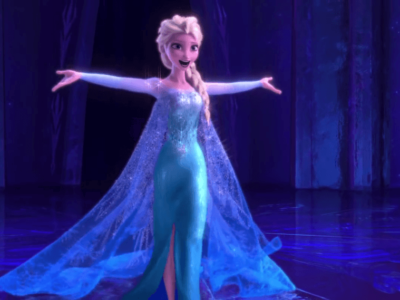Has your roommate ever opened the door to find a Disney movie on the TV and you dancing along (possibly in your underwear) to the final musical sequence and happy-ever after-song? If so, your roommate probably laughed and you probably felt great shame. You’re a college student: Disney is for toddlers. Stop watching cartoons and go to class.
At least that’s what the world says. I’m here to tell you that watching Disney movies is good for college students. It’s fun, uplifting and believe it or not, academic material. No matter your major or area of study, I promise Disney has something worth your scholarly attention, something you can write a paper on or link to your senior thesis. Disney movies are shown to kids because they do a wonderful job of introducing the ideas humans need to understand—morality, history, politics and more. As we age, the movies don’t lose these ideas: we just gain the ability to find them and analyze them on a deeper level.
Find out which of these 10 Disney movies will work into your next paper.
1. Atlantis: The Lost Empire
Dorky linguist Milo Thatch and a team of adventurers rediscover the submerged kingdom of Atlantis.
Academics: It’s a gold mine for history and anthropology students. The white Milo discovers a kingdom of brown-skinned, lightly-clad people, brings them writing and technology and ultimately rules Atlantis beside its beautiful princess. These are familiar colonial and exploration tropes, and your teachers will ask why we continue to use them and what impact they have. You can answer with this movie as inspiration.
Fun: Despite the stereotypes, the plot is well-developed. The animation style is also relatively realistic and the moral themes are quite grown-up.
2. Bambi
An adorable baby deer befriends rabbits and skunks, loses his mother and makes grown men cry from cuteness overload.
Academics: It’s an excellent model for students of graphic design and animation. Making cartoon animals that are both realistic and appealing to humans is quite difficult, and Bambi succeeded. If you want to learn to create characters who are both visually unique and uniquely expressive, practice drawing Bambi.
Fun: It grabs the emotions in a way most movies can’t. I still laugh or hold back tears when I remember scenes. Plus, did I mention the cuteness and adorableness and awwws?
3. Dumbo
https://www.youtube.com/watch?v=Biigna1PMOw
A bullied, big-eared baby elephant learns to fly, wins over circus crowds and reunites with his caged mother.
Academics: This movie is a good touchstone for the new field of disability studies. Dumbo is rejected for his physical differences, but he eventually comes to see them as special and positive. This storyline is very similar to what many disabled individuals, especially children, experience and use to adapt. Its appearance in a 1941 film is remarkable, and your professors would love to see someone trace the widespread development and acceptance of these attitudes.
Fun: Like Bambi, it’s high-octane cuteness. It’s also nostalgic: the animation style is the charming pre-CGI type, and the storyline is meant for laughs and happy endings.
4. Fantasia
Eight animated sequences, each depicting a different loose storyline, are set to awesome classical music scores.
Academics: Film, literature and education students will like this. Fantasia is a great model for adapting seemingly stuffy concepts and making them enjoyable for all audiences. The stories are set to the music, not vice versa, and they give people an introduction to classical music that few would get otherwise. If you want to learn to be creative with sophisticated ideas and make them accessible, whether in your own writing or for the students you teach, watch Fantasia.
Fun: The stories are abstract, so you can sit back and just plain enjoy them without worrying about plot holes or loose ends. The visual designs are absolutely gorgeous and still give me shivers. Plus, Mickey Mouse ruins everything in hilarious fashion.
5. Frozen
Princess Anna must end a supernatural winter and choose between a rough mountaineer and a prince who’s too good to be true.
Academics: Frozen has great material for literature and gender studies. I recommend it to any aspiring creative writer, because it inverts everything we expect from a story. There’s a heroine instead of a hero, familial love is more dependable than romance, and love at first sight is unrealistic rather than perfect. In gendered terms, Elsa and Anna are cleverly developed and independent of male characters. This is exactly how portrayals should be changing, and this change deserves study.
Fun: If I had daughters, this is the Disney movie I would have them watching. It actually thinks about its characters and their relationships, and it teaches us to welcome equal love and friendship over unrealistic first crushes and heartbreak.
6. Hercules
A fallen Greek god and aspiring hero strives to master his powers, foil Hades’ plots and successfully hit on a redhead.
Academics: Like Fantasia, it’s a good choice for education and English majors. Future teachers can use this to sneak in a lesson on Ancient Greece and its influence, and the kids will have fun with it. Writers and analysts will find Hercules a good example of how to adapt ancient stories for modern audiences. For example, mythical characters Philoctetes and Megara become the much more relatable Phil and Meg, and film Hercules’ persona is more sympathetic and less violent than the original Hercules’.
Fun: The art style is somewhat gimmicky, but the villains are memorable, the heroes are goofy and the ending is sweet. Some days you can’t ask for more than that.
7. The Lion King
Lion prince Simba grows up in exile, until his destiny drives him to reclaim the throne from his usurper uncle Scar.
Academics: The Lion King needs to be required viewing for English majors. It is one of the textbook examples of the Hero’s Journey, a formula that underlies most fiction, and the characters found in that formula. Simba’s coming of age, travels and winning the kingship fit the traditional storyline of a heroic character. Nala, Rafiki, and Timon and Pumbaa are excellent prototypes of the love interest, the wise mentor and the loving adoptive parents. If you want to write or study literature, you need to understand the basic ideas of storytelling, and The Lion King is one of the most accessible examples.
Fun: It’s an epic fight between good and evil—what’s not to like? The lines are eminently quotable, especially when spoken by Pumbaa and Scar, and the hyenas are genuinely scary.
8. Mulan
A girl disguises herself as a boy to join the Chinese army. She and her animal sidekicks end up standing between the kingdom and a Hun invasion.
Academics: Like Frozen, Mulan is good for gender studies. The heroine overcomes the (unfortunately still prevalent) doubts on whether women can be as capable as men within fields such as the military and professional work. She also does a good job of showing how women are often constrained, how their skills are doubted and how they can break out of limiting cultural expectations.
Fun: Mulan is a clever, enjoyable character, and the action sequences and villains are some of Disney’s best. The story also focuses on Mulan’s accomplishments over a token romance, which is a nice departure from many films.
9. Pocahontas
Pocahontas and John Smith fall in love while their peoples fight over the colonization of America.
Academics: History students take note: Pocahontas is a good study of racism and attempts to rewrite history. Reality was considerably harsher than the movie: Pocahontas’ people were never accepted as equals by Europeans, and John Smith was more likely to hold her hostage than romance her. Such concealment of atrocities and racism is a hot topic in classrooms and society today, and Pocahontas is a universally accessible starting place for examination of the trend.
Fun: While the movie is sadly dated as a whole, the animal characters and soundtrack are quite entertaining.
10. Tangled
A very naive, very blonde Rapunzel and a wannabe dashing rogue try to outfox a wicked stepmother.
Academics: Drama students take note: Tangled has good lessons on stagecraft. The movie has a very theatrical appearance, with bright colors that would be perfect for a stage set. Character movements are exaggerated, so every action is emphasized and hard to miss, an ideal for stage productions. The physical comedy—hitting with frying pans, coping with overgrown hair—is also well suited for theater slapstick. Take notes for your next Romeo and Juliet showing.
Fun: It’s a lighthearted comedy, something we all need at times. The characters, especially Flynn and Gothel, are very endearing.



















